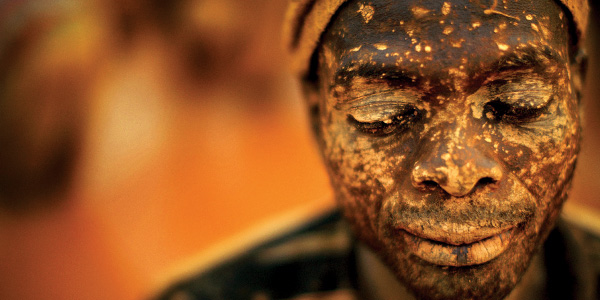Currency: The Year of 'Printing Money'
A black-market gold rush in Mozambique has tens of thousands of wildcat miners - many of them children - braving malaria, mercury-laced waters, and violence for meager payouts. (Robin Hammond/Panos)
---
The Year of Printing Money
Most years the Bureau of Engraving and Printing does its work, turning sheets of paper into bills at plants in Washington and Fort Worth, entirely out of the spotlight. Not so in 2010. Glenn Beck, Rand Paul, and Sarah Palin turned currency printing into a cause célèbre. Too much of it, they said, would trigger hyperinflation and destroy the middle class. Palin tweeted on Nov. 7 about the Federal Reserve's plan to "print $ out of thin air."
Even in quiet times, currency has a magical quality that both fascinates and frightens people. Imbued with priest-like powers, the government—and only the government—can transubstantiate a simple piece of paper into legal tender. When the Federal Reserve exercises that awesome power to the fullest, as it did in 2010 to fight the economic slump, a backlash of suspicion is probably inescapable. Hence the rally signs: "Abolish the Federal Reserve." "The Fed. Terrorists Since 1913." And this deliciously subtle one: "Irony Is Andrew Jackson on a Federal Reserve Note." (President Jackson, in the 1830s, opposed the quasi-Fed of his day.)
Taken literally, "printing too much money" was not the thing for anyone to worry about in 2010. The amount of currency printed and put in circulation has risen only 18 percent, or $140 billion, since the Fed went into monetary overdrive in 2008. What has grown by $1 trillion, or 2,100 percent, is something else: banks' deposits at the Federal Reserve. Those deposits, also known as reserves, cannot directly cause inflation because they cannot be spent for goods and services.
Still, Palin and her followers have a point. When the economy revives, banks will start making more loans, putting real money into people's pockets. Too much money chasing too few goods is the textbook cause of inflation. To prevent credit bubbles, the Fed has always insisted on limiting the amount of loans that banks can make in relation to their reserves. But because the Fed has been stuffing banks with far more reserves than they will ever need, that's no constraint at all.
Continue reading at Bloomberg...


 Dec 22, 2010 at 1:49 PM
Dec 22, 2010 at 1:49 PM
Reader Comments